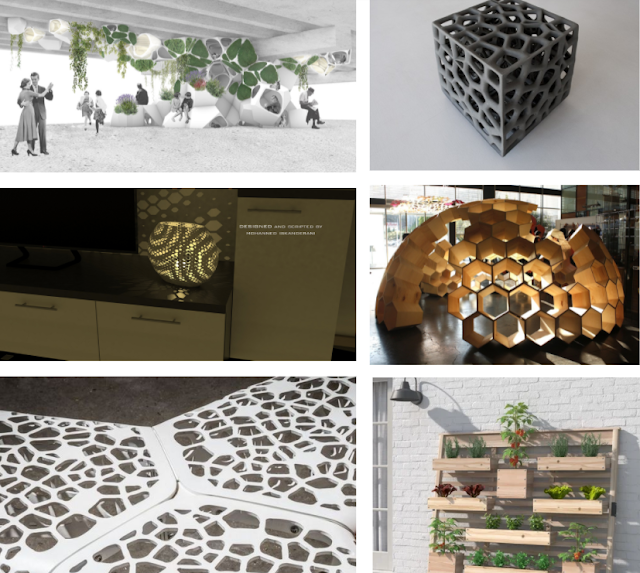This week I came up with some ideas for a piece of parametric furniture. I started by researching other examples of furniture and other objects that are defined as parametric. I noticed additive designs looked really interesting, I also liked how the objects made out of additive patterns tended to look lighter and required less material. Common patterns of meshes I tried to use were hexagons, neuron-like shapes, or shapes that mimicked plant cell clusters. Next, I looked into materials, I found a variety of materials that could work but based on the texture I want to create, I think plastic is the most likely material I would go with. Here are some visual examples of the surface I want to create:
Here is a link to the document with all the
Parametric Object Research and where the images are sourced.
After I finished my research I began to sketch some ideas. I was really interested in the idea of incorporating plants into furniture.
I chose the concept of a coffee table that has dents in the top of the table that fit plant pots. I am imagining that the coffee table would come with pots, and they would only fit into one of the dents. When not in use the dents could be covered by a plate to make a flat surface. I want to incorporate the surface texture of plant cells and create a very organic shape. Once I picked a concept I made it with play-doh to get a better idea of what it would look like.
I created a start of a definition for the table (currently in one solid shape). I then baked the start of the table to create the holes for the table. I wasn't sure how to do that in Grasshopper, but I would like to eventually have one of the variables be the number of dents that can be added.
Next week I want to spend some time figuring out how to create the meshed surface I want for the table. I have started looking at some tutorials, but I need to spend some more time on them before I attempt to do it myself. An alternate plan to the plant cell texture is to use the technique of having lots of thin shapes stacked together for the layered effect. That is how the taper in the above image was made.
I'm excited to see what I can do in Grasshopper with this concept.








Comments
Post a Comment